Bob Dylan's 75th birthday arrived in late May, less than a week after the release of his second album of pop standards, Fallen Angels. In the coming months his entire archive will be transported across the Oklahoma state line to be permanently housed at the Helmerich Center for American Research at the Gilcrease Museum in Tulsa (in affiliation with The University of Tulsa and the George Kaiser Family Foundation), where a vast collection of ephemera will become available to researchers. The collection is said to include an enormous number of audio and video recordings that will undoubtedly shed light on the legendary songwriter’s most unheralded art form—live performance.
Dylan’s work is too often quantified by the number of official albums released, a number that totals more than fifty including thirty-seven studio releases, a handful of live albums, and a dozen Bootleg Series releases. Within each release, Dylan has provided us with isolated singular performances of his compositions. (The large majority of Dylan’s released tracks were recorded in one uninterrupted complete take—thus each track provides a single performance. For our purposes a song that has been overdubbed will also represent a single performance). By this logic, the total amount of officially released singular performances stands somewhere around one thousand, a staggering amount of work by any stretch of the imagination. Yet this figure amounts to just two percent of Dylan’s total song performances. Where is the other ninety-eight percent? The answer can be found in the treasure trove of artistic virtuosity laid bare in his live performances. To focus praise solely on his official releases, as extraordinary as they are, robs Dylan of his artistic achievement of having become perhaps the greatest performance artist to ever walk on stage.
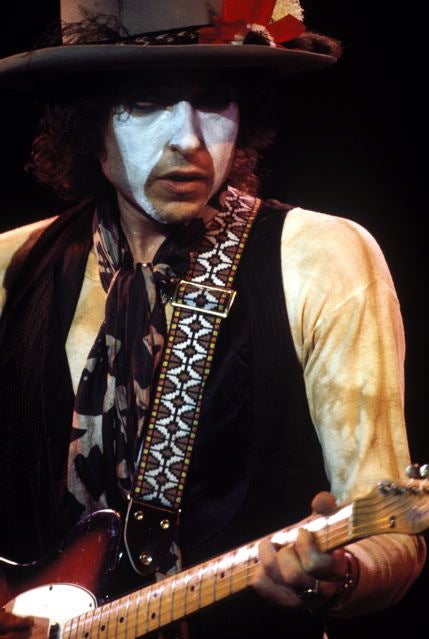
Dylan has performed more than 350 different songs for live audiences. When calculating the amount of original material from which he could generate a setlist, the numbers speak volumes. He’s known to have written and recorded about 600 songs in 55 years, or about ten songs released a year on average. (Released is the key word, however. It might be fair to speculate that—at an average of eighteen songs per year—Dylan has likely penned more than a thousand songs.). He has performed for a live audience nearly 3,500 times and quite famously does not intentionally try to reproduce a song the same way twice. Providing Dylan with a modest average of fourteen songs for every live appearance, quick math reveals more than 50,000 different song performances have been presented. These statements seem to be paradoxical. How could a performer spontaneously conjure fresh, nuanced alterations to the framework of a chosen song’s original composition on 50,000 occasions? To look at it another way, that’s Dylan singing an average of two or three of his songs a day in an intentionally different manner for every single day of his fifty-five-year career.
To get a sense of what kind of evolution a Dylan composition might undergo, 1964’s “One Too Many Mornings” provides a superb illustration of just one example from hundreds, recorded for the album The Times They Are A-Changin’. The studio performance is shrouded in melancholy as Dylan—alone with acoustic guitar and harmonica—wearily confesses the loss of a loved one. The song, played in an open A tuning with concise fingerpicking, contains three six-line stanzas with the final two nearly-identical lines of each stanza acting as the chorus: “…I’m one too many mornings / And a thousand miles behind.” After its release, Dylan would perform the song alone with guitar and harmonica a single time in 1965, to a small studio audience for the BBC in London. On guitar Dylan adds a new rising and falling countermelody between lines while on vocals he introduces phrasing in sharp contrast to the studio cut, drawing out the word “miles,” followed by an extended pause before releasing the tension with a fatigued, aching “behind.” Though less than a year old, the song here—as well as the singer himself—sounds as if it were just unearthed from a time capsule of some bygone era.
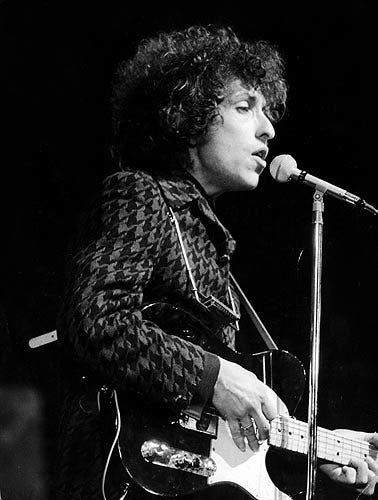
He would next present the song live in 1966 in Hempstead, New York, except the performance would now feature Dylan on electric guitar, backed by Robbie Robertson and members of the Band, as they would later be known. This time Dylan reinvents the song with an entirely new rock arrangement as the band shreds their way through it with boisterous ferocity. The pause between “miles” and “behind” remains with great effect, punctuated by Rick Danko’s hanging two-note bass fill and backing vocals on just the final word of the chorus. The song would become a setlist staple for the remainder of the tour. Many nights Dylan can be heard joyously shouting out after the second verse to signal an always searing guitar solo from Robertson that arches over Garth Hudson’s ethereal organ swirls, spraying bewildered audiences with the sonic equivalent of Molotov cocktails.
Following the revolutionary 1966 performances Dylan would return to the studio and record two more different versions of the song with Johnny Cash in February of 1969, and another two with George Harrison in May of 1970 (all of which remain unreleased). His acoustic duets with Cash were recorded in Nashville where the song is given a complete country makeover, lending its tone and rhythm to the legend of Cash himself as it chugs along, slowly gaining momentum like the last train out of town. In another leap of form, the song has been fitted with a key change for every verse, likely a nod to Cash’s use of the technique in his seminal 1956 recording “I Walk the Line” (a duet of this song was also recorded by Dylan and Cash that day). The following year during recording sessions for his New Morning album at Columbia’s Studio B in New York, Dylan’s performance with George Harrison would present a jaunty, piano and bass-driven ditty with Harrison backing on vocals and taking two separate solos on electric guitar. While these recordings may not have captured lightning in a bottle, they unequivocally reveal Dylan’s dazzling ability to reimagine the song at every turn. And he wouldn’t stop there.
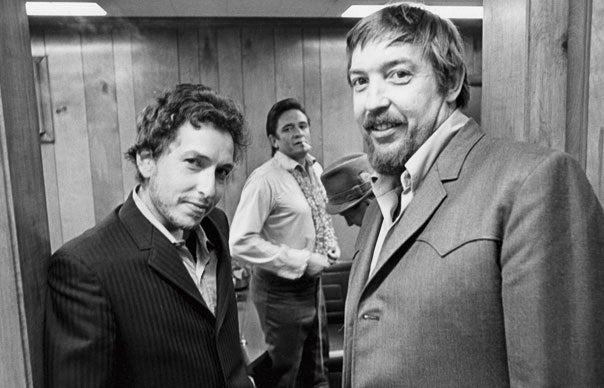
Outside the studio, Dylan revisited the song in the winter of 1967 with the Band at a home in upstate New York, which surfaced in 2014 as part of The Bootleg Series Vol.11: The Basement Tapes Complete. Never meant for release, this elegantly performed electric version is warmer and gentler than the ’66 versions and features the angelic vocals of Richard Manuel on the opening verse. As with the bulk of the basement tapes recordings, this impromptu version of the song offers that elusive “sound-of-the-room” feel that many recording artists only dream of capturing. Dylan and the Band would return to the song again in 1969 at the Isle of Wight Festival for a crowd of 150,000 (including John Lennon, George Harrison, Eric Clapton, and Keith Richards). This new arrangement, rock-driven but laid back, features a blend of Dylan’s country croon heard on his just-released Nashville Skyline album now paired with the pastoral, exultant disposition later to be introduced on 1970’s New Morning. Playing acoustic guitar and clad in an all-white suite, a patchy-bearded Dylan plays with our perception of time as the song periodically speeds up and slows down, unified only by Levon Helm’s restful cadences and Robertson’s twangy guitar bends.
The song would be transformed over and over in performances from 1974 to 1978 during Dylan’s tours. His 1976 performances amid the tail end of his fading Rolling Thunder Revue tour are particularly notable with a stand out performance forever enshrined in one of the greatest live albums to ever be released, Hard Rain. Recorded the day before Dylan’s 35th birthday in Fort Collins, Colorado, this raw electric version is stripped bare and unhurried. Scarlet Rivera’s haunting violin weaves an undercurrent of sorrow beneath Rob Stoner’s deliberate bass that trudges along like the steady march of time itself. In bell bottom jeans and a white headscarf, a bearded Dylan commands the performance as he draws out the tail end of words with a stutter-effect, provides a prickly thin guitar solo, and even adds new lines to close out the song: “I’ve no right to be here / If you’ve no right to stay / Until we’re both one too many mornings / And a thousand miles away.” Gone now is the white face paint he’d worn onstage just months before, allowing us a first-hand glimpse into his entangled rage and despair as he bares his soul with every breath. The new arrangement would now include a clashing B chord that injects into the song an air of crumbling instability. Dylan was in the final stages of a long and bitter divorce as he played for a rain soaked audience that day, which seemed to fuel his performance with more heartrending emotion than ever before.
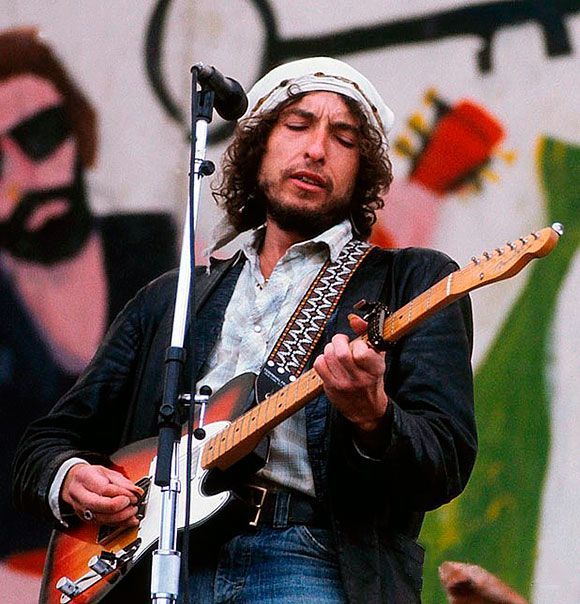
The song was placed on the backburner from 1979-1981 while Dylan devoted most of his energy to explorations in gospel music. It should be noted that the live shows during these years, with particular praise to Dylan’s vocal acrobatics, are among the most astonishing of his career and surely to be the focus of an eventual Bootleg Series release. He then spent time exploring reggae rhythms, world politics (1983’s Infidels), multi-track layering and “collage” copy-and-paste songwriting (1985’s Empire Burlesque) before reintroducing “One Too Many Mornings” unaccompanied during a 1986 set that regularly featured songs from Dylan alone with guitar and harmonica (a rare delight ever since the day he went electric more than fifty years ago). Despite the solo arrangement the song here is incomparable to the studio version, for Dylan is now strumming all strings quite forcefully, saturating the song with a kind of ringing glow (and long buried is the open A tuning of the original). After dozens of moving performances in 1986, Dylan would return to the song again nearly two hundred times over the next twenty years.
In 1993 Dylan played the song a single time, amid one of four masterful shows at the Supper Club in New York City. This acoustic backcountry arrangement features hypnotic banjo lines by John Jackson, Bucky Baxter’s steel slide guitar, and an inspired harmonica solo by Dylan to close out the song. Many introspective acoustic performances of the song between 1998 and 2002 are also particularly striking, as by now Dylan had perfected a flatpicking style on lead guitar which allowed him to break lines up by improvising short guitar fills—a technique he is said to have learned from blues legend Lonnie Johnson—that often formed a melodic foundation for his extended solo later in the song. Employing this method Dylan uses these fills to literally break his own vocal expressions apart melodically, often blurring the line that separates idiosyncratic phrasing from the introduction of a new melody altogether.
A slow-burning June 9, 1998 version of the song in Stockholm clocks in at seven and a half minutes—double the length of the incendiary rock performances twenty-two years earlier. Dylan’s bright, expressive acoustic guitar work conveys a bittersweet mix of heartache, acceptance, and then—against all odds—jubilance. In the song’s fleeting moments, just as it appears to be winding down, Dylan seamlessly opens a new avenue of melody with a passionate, floating harp solo that stirs up the band and elevates the piece into another realm entirely. Two years later in Münster, Germany, another dreamy seven-minute performance finds Dylan slowly dragging out the final word of each line, again altering our sense of how time passes. Amateur video footage of this performance reveals Dylan, again in the song’s final moments, shifting his guitar neck down and behind him to focus on a harmonica solo as he discovers a swinging countermelody and transforms the song into a clap-along shuffle, complete with bouncy dance moves from the man himself.
Then there’s the May, 2002 Manchester gig which finds Dylan—with cowboy hat and pencil-thin mustache—opening a rustic, stunningly gorgeous six-minute acoustic version of the song with a pensive harmonica solo, accompanied by Larry Campbell’s lilting pedal steel guitar. After the opening solo—as if channeling the muse—Dylan drops the harmonica behind his feet and starts right in with the first verse and truly inspired guitar work as his left-hand moves up and down the fretboard with a restless energy throughout the song. In just the opening moments of the performance, it becomes obvious that Dylan has tapped into that “wellspring of creativity,” as he described it in a 60 Minutes interview with Ed Bradley in 2004. This is the kind of moment fans yearn for when they purchase a ticket to his show, a moment of seemingly inexplicable magic—something almost in the air—when the room is frozen and Dylan is in his element. Built on a just few of notes and beautifully imperfect, Dylan’s second guitar solo virtually turns the song into a convivial jam, a celebration music itself. Much like his trademark “upsinging” of the era, where the last word or syllable of a line is raised up in pitch, so too speaks his guitar solo on this version. Another interesting moment in the performance comes when the harmonica Dylan discards to the stage floor is inconspicuously retrieved by a crew member, dusted off, and neatly placed where the singer can access it again. He doesn’t go back to it in this performance, but if legendary Dylan producers Tom Wilson and Bob Johnston have taught us anything about Dylan’s moments of inspiration, it is to quite simply provide Dylan access to his tools and always keep the tape rolling. Though “One Too Many Mornings” may not appear on the ubiquitous top-twenty lists of Dylan’s greatest works, what the song does reveal is his incessant drive to renovate and redevelop his art. It’s no small wonder that the song was a personal favorite of another versatile visionary of modern times, Steve Jobs.
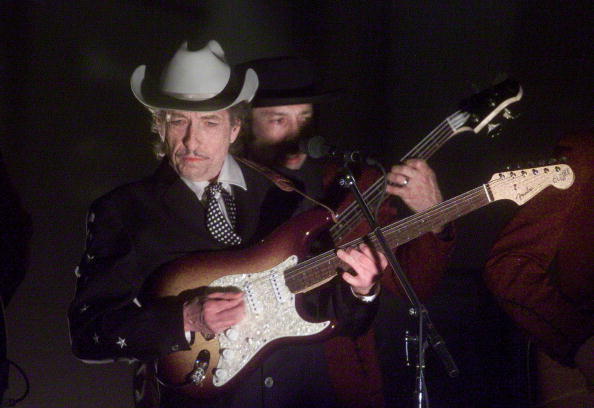
Dylan’s extraordinary abilities on guitar, piano, and harmonica are among the most expressive as anything in the history of recorded music. And that’s without mention of his greatest and most expressive instrument of all—his voice. Though his unconventional voice has become cultural fodder for jokes and parody, he who claims Dylan is not a skilled singer is simply not paying attention. Even Nick Jonas felt the urge to weigh in during a 2010 appearance on the Jimmy Kimmel Show when he went for a cheap laugh and naively alluded to Dylan’s inability to sing well. (One couldn’t help but think: Something is happening here but you don’t know what it is, do you, Mr. Jonas?). Dylan works onstage when he sings. With sweat and blood he reaches out for the muse, he screams and sneers, laments and croons; all the while possessing an extraordinary ability to sense when a performance might be heading rote before suddenly giving everything he has to take the song to some unfamiliar place. His improvised vocal melodies float free from the confines of a song’s currently designated chord progression, allowing him to keep on his toes and avoid predictability; an emphasis here, a pregnant pause there. Within a single performance of a song he can come upon a new phrasing technique and experiment substantially with its boundaries. When the song ends there’s no telling how it will be sung the next time. None at all.
Dylan still averages about a hundred shows a year, a streak he began in 1988. Each tour tends to develop new arrangements where Dylan—as always—toys with conventions of melody and phrasing, syncopation of rhythm, and alternative keys. Decades of live audio recordings have provided remarkable insight into Dylan’s understanding that a written song represents only a structural blueprint, and that the possible variations within its seemingly rigid framework of chord changes, lyrics, and melody can become infinite. Though other songwriters may consider a composition elastic during its creation and initial recording, Dylan ensures his songs remain elastic for as long as he decides to perform them. They breathe and evolve decade after decade. Call to mind his famous lyric “He not busy being born is busy dying,” from 1965’s “It’s Alright, Ma (I’m Only Bleeding),” then apply the aphorism to each of his song performances (as well as to his stage persona itself) and Dylan’s inexhaustible modus operandi soon becomes evident. Some of his songs such as “Tangled Up in Blue” or “Workingman’s Blues #2” deliver constantly changing lyrics. Other remarkable song transformations can be heard throughout hundreds of performances of “A Hard Rain’s A-Gonna Fall,” “I Don’t Believe You (She Acts Like We Never Have Met),” “If You See Her, Say Hello,” and scores of others all the way up to his most recent compositions such as “Pay in Blood” or the spellbinding masterpiece “Long and Wasted Years.” As Dylan continuously renews his approach to live performance each of his songs are renewed along the way.
Researchers will soon pore over the multitude of live performances to become available, a process that could take quite some time. To put the sheer volume of material into perspective, if a researcher aspired to hear every Dylan show at a rate of one concert per day the process would take nearly a decade to complete. When commenting on the number of live concerts that have been professionally recorded, Michael Chaiken, a curating member of the Tulsa archive, told Rolling Stone magazine in March “By the time the 1970s rolled around, they were recording every show.” This would account for roughly 3,000 shows. And of the remaining 500 there are hundreds of bootleg tapes circulating, leaving it safe to presume that the vast majority of Dylan’s live recordings were indeed captured on tape and will in due time be archived, digitized, and preserved, along with hundreds of hours of unheard studio sessions.
Until that time comes we will have to rely on the official Bootleg Series releases, which have been instrumental in revealing at least a tiny glimpse into Dylan’s artistic process, both in-studio and live. Try comparing his 1975 live performances of “It Ain’t Me, Babe” or “The Lonesome Death of Hattie Carroll” to their studio counterparts, or listen to three different in-studio takes of “Just Like a Woman” or “It Takes a Lot to Laugh, It Takes a Train to Cry” from The Bootleg Series Vol.12: The Cutting Edge 1965-1966, or juxtapose multiple renditions of later works such as “Can’t Wait” or “Mississippi.” The list goes on. The truth is an individual track selected for release on an album does not represent Dylan having captured the perfect sound to reproduce live to millions of people; instead it represents one satisfactory performance of a version of a song. Thus the only version we hear on record is the way it happened to be played on that one day during that one take.
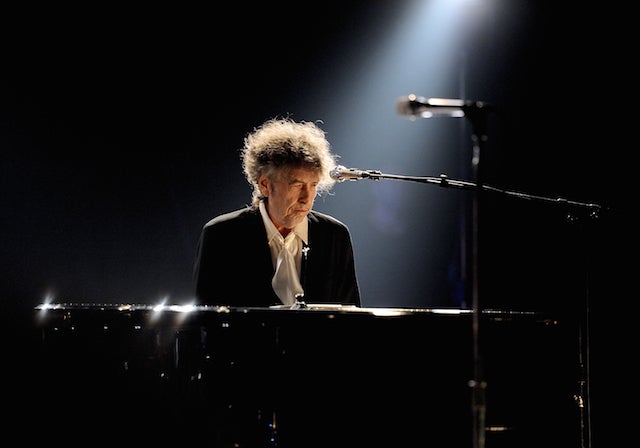
In a rare change-up Dylan’s concerts over the past three years have featured largely consistent setlists. In 2013 for example, Dylan played only twenty-four different songs over the course of some eighty-five concerts, whereas in 2002 he performed 125 different songs throughout 107 shows (tour-debuting a new song pretty much every night he took the stage). This year however, with more than half his nightly show focused on his two recently released albums of pop standards, Dylan is actually doing something he’s never done before—he now is trying to reproduce the same sound for every performance (this can only be said of the standards, his own compositions continue to evolve in true Dylan fashion). With remarkable concentration and some of the strongest vocal performances of his career, Dylan’s current touring persona pays humble respect to these nearly forsaken songs, allowing audiences to become transfixed by their timeless beauty and undeniable power. By tapping into the wistful disillusionment of “What’ll I Do,” or the sobering revelations of “Autumn Leaves,” Dylan continues to captivate audiences with every performance. Interestingly this “radical change” to Dylan’s norm just might make him the only performer for whom it can be said that the decision to maintain a predictable setlist is itself an aesthetic one.
When Dylan was asked at a 1965 press conference if he thinks of himself primarily as a singer or as a poet he earned no shortage of laughs by famously responding “I think of myself more as a song and dance man.” Though delivered with a sly smirk, it appears Dylan offered a genuine answer to the question while rejecting both of the reporter’s labels at once. The burst of laughter that followed presumably stemmed from the notion of a song and dance man evoking images of minstrelsy, stagey show tunes, or pop bombast. Dylan’s art embraces all of these influences yet explicitly exhibits none of them. His visual stage presence has manifested dozens of incarnations with a long list of (largely media-branded) descriptions that include: the train-hopping folkie, the protest singer, the beatnik, the anti-establishment punk, the drugged-out rocker, the circus mime, the hellfire preacher, the drifting cowboy, the backwoods countryman, the riverboat gambler, the carnival barker, the roadhouse bluesman, and the consummate elder statesman. These constantly emerging stage personas have allowed Dylan to glean influences from all sorts of nineteenth and twentieth century cultural figures to create a limitless array of composite characters over decades, replete with the world-weary reflections of Woody Guthrie, the unbridled swagger of Elvis, the enchanting panache of Charlie Chaplin (complete with eighteen-frames-per-second affectations), the exuberant animation of Mickey Mouse, or the dignified composure of Mark Twain. Consciously or otherwise, this extraordinary performer has managed to appropriate these diverse attributes along with countless others to create a single persona that we have come to recognize time and time again as “unmistakably Dylan.”
A final note on “One Too Many Mornings,” Dylan has not performed the song live in eleven years, or about a thousand shows. Though it will continue to be performed innumerably by various artists in the years to come, it may never again be performed by Dylan.
This essay first appeared at the literary journal Atticus Review.
Follow Matthew Panzera on Twitter: www.twitter.com/MatthewPanzera
